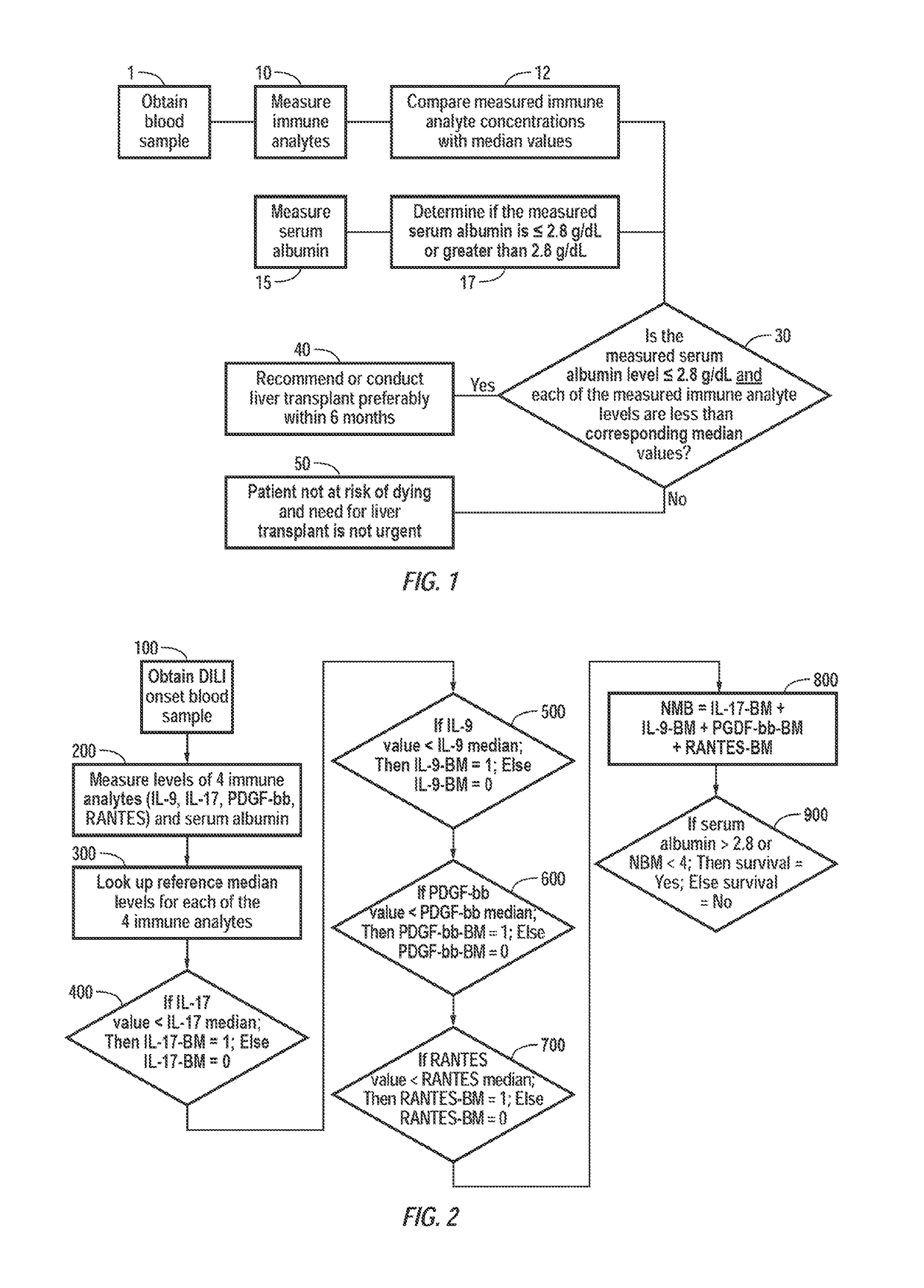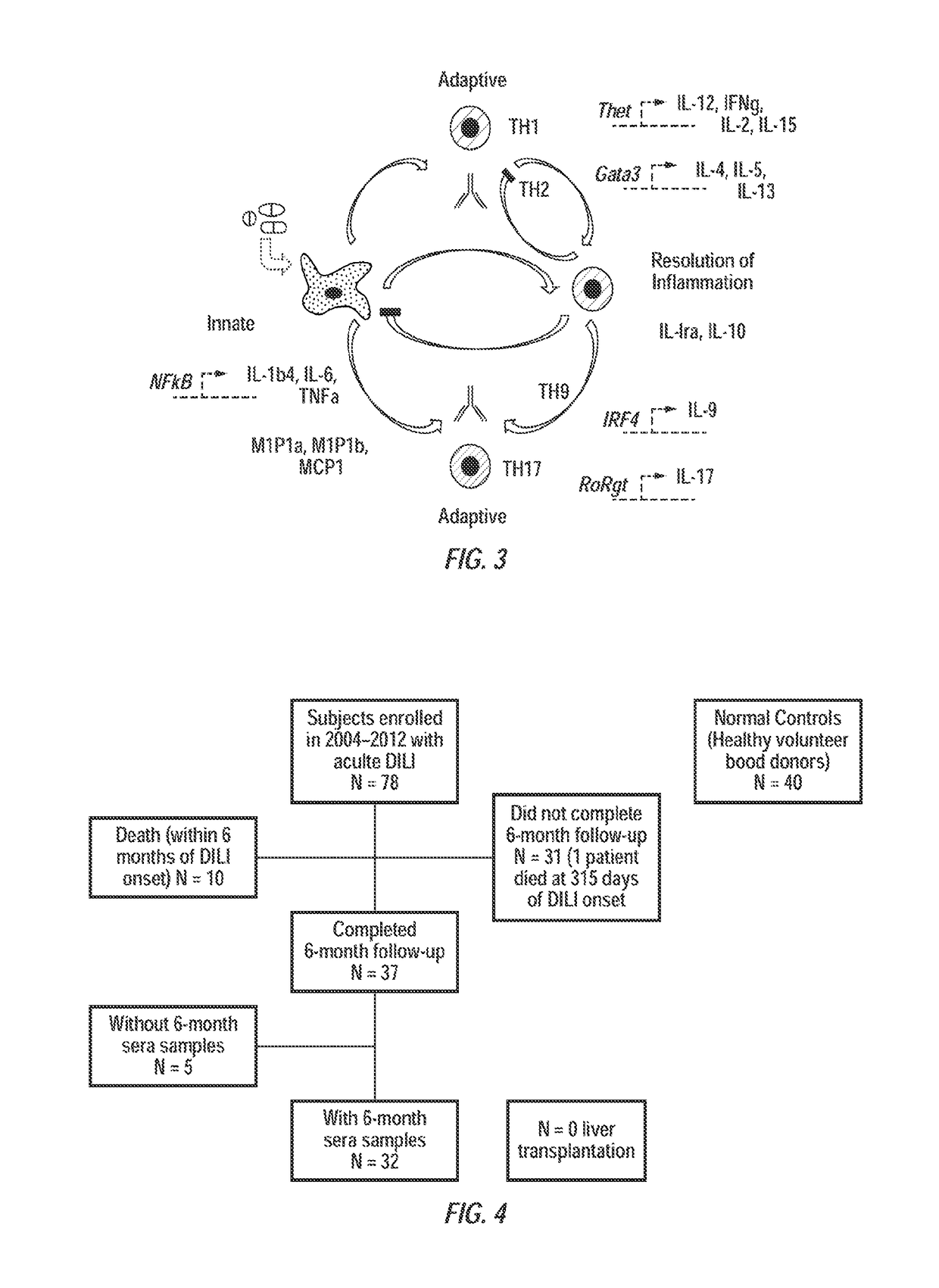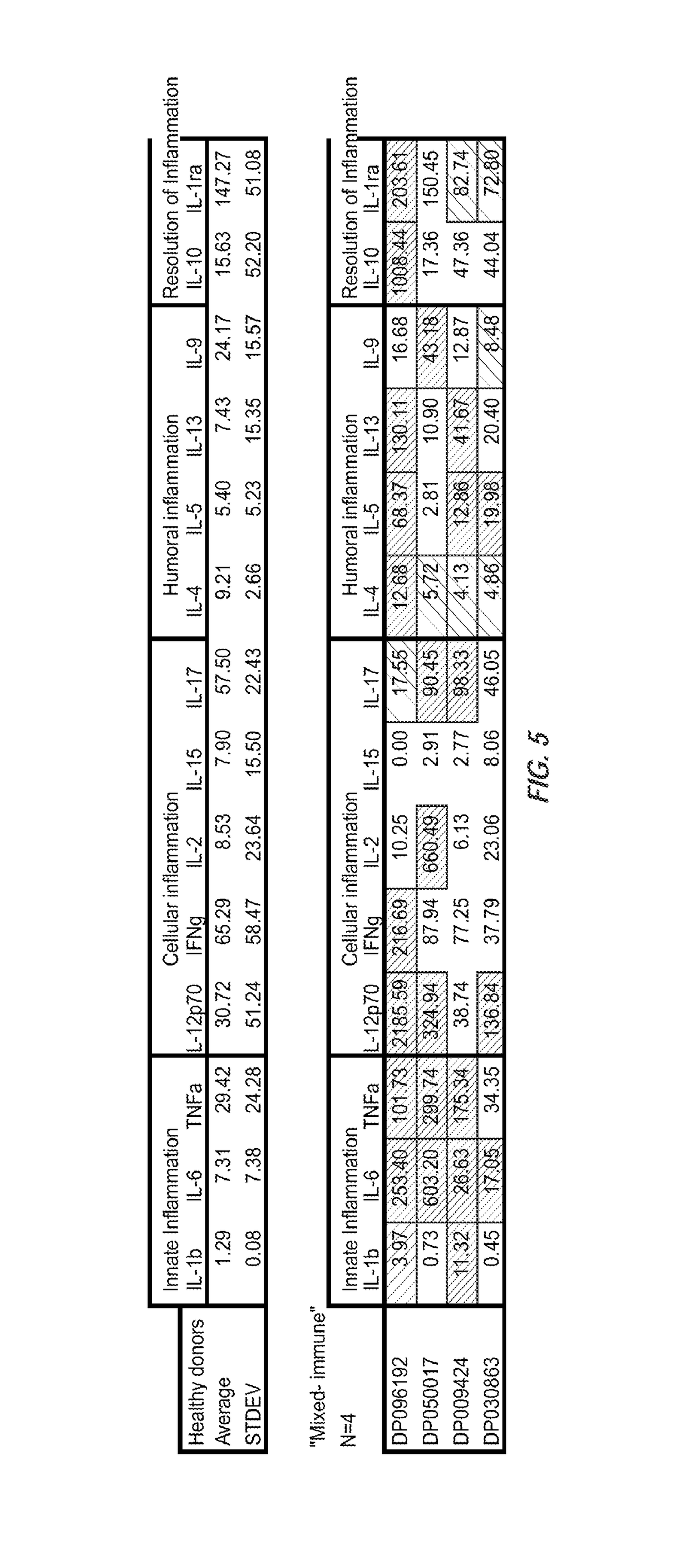Biomarkers for the identification of liver damage
a liver damage and biomarker technology, applied in the field of liver damage biomarkers, can solve the problems of increasing prevalence and importance, abandoning otherwise promising new drug candidates, and withdrawn from the market of new drugs, and achieves the effect of increasing risk
- Summary
- Abstract
- Description
- Claims
- Application Information
AI Technical Summary
Benefits of technology
Problems solved by technology
Method used
Image
Examples
examples
[0062]Certain embodiments of the present invention are further illustrated by the following working study, which in no way should be construed as being further limiting. That is, the specific methods and results described are illustrative of certain embodiments, including a preferred embodiment, of the present invention, not limiting.
[0063]A study was conducted in which levels of 27 immune analytes were measured in the sera of subjects with well-characterized, carefully studied, acute DILI, who were then followed for at least one year in the prospective US Drug-Induced Liver Injury Network. This Network and its major methods have been described previously (10, 25, 26), and findings in the first three hundred subjects enrolled have been described (10). In this work, results were compared from 78 subjects with acute DILI, with those of 40 normal controls (e.g., volunteer blood donors having a healthy liver) in whom serum proteomic profiles were reported recently (27). As discussed bel...
PUM
 Login to view more
Login to view more Abstract
Description
Claims
Application Information
 Login to view more
Login to view more - R&D Engineer
- R&D Manager
- IP Professional
- Industry Leading Data Capabilities
- Powerful AI technology
- Patent DNA Extraction
Browse by: Latest US Patents, China's latest patents, Technical Efficacy Thesaurus, Application Domain, Technology Topic.
© 2024 PatSnap. All rights reserved.Legal|Privacy policy|Modern Slavery Act Transparency Statement|Sitemap



